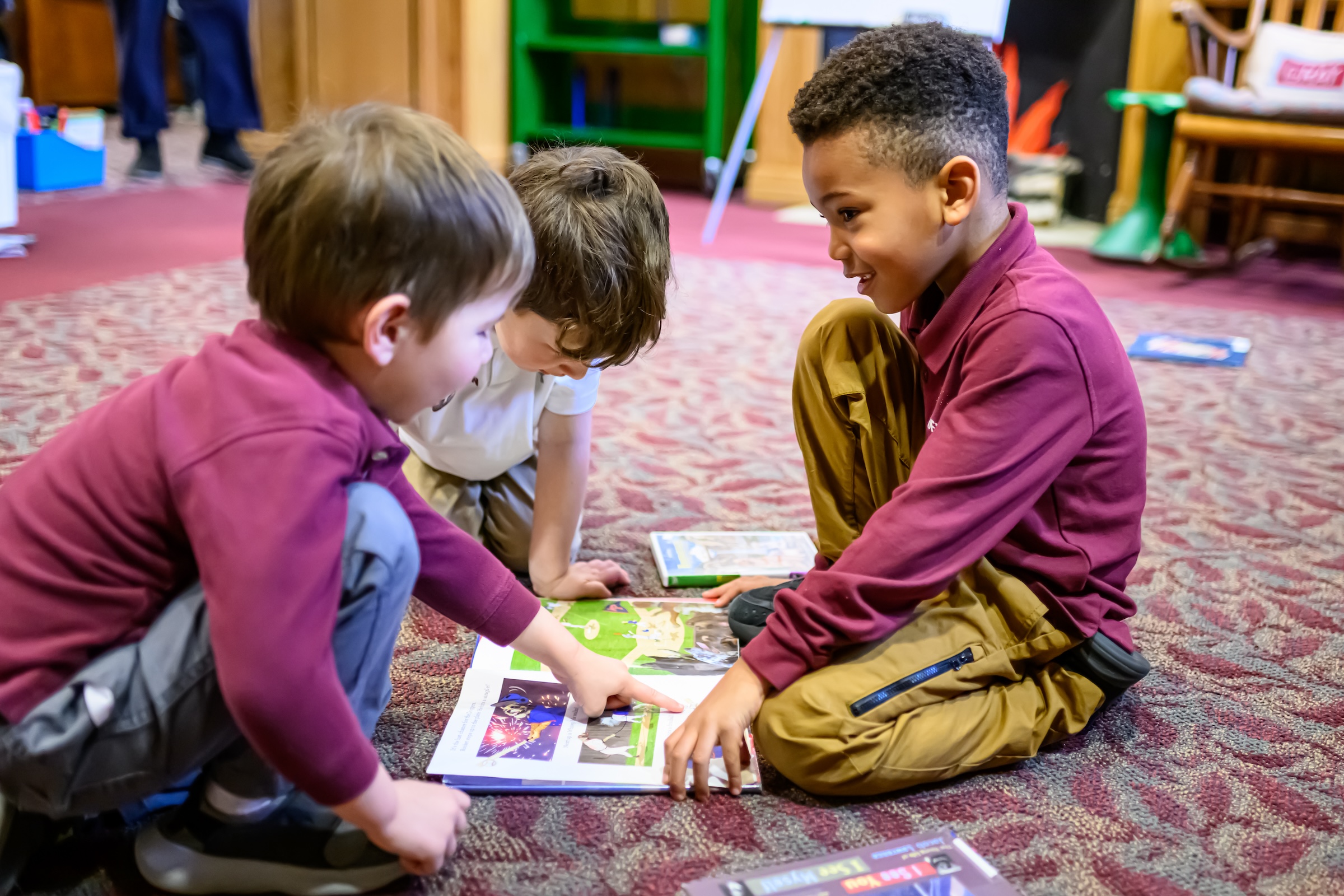Literacy is the foundation upon which your son’s academic future will be built. When children learn to read, they gain the key that will open up the doors of learning in every other subject area: language, math, science, social studies, the arts.
This is one of the reasons why a high-quality academic kindergarten program is so important. It’s when children— guided by their teachers—really get down to the task of learning to read. Most students enter kindergarten knowing a handful of letters and their corresponding sounds. They leave kindergarten able to recognize the entire alphabet, sound out some words, and even read simple books.
That's a lot of ground to cover in one year, whether your child is at a private school or elsewhere.
How the best kindergarten programs teach kids to read
So how does an exceptional kindergarten program help students build a sturdy foundation of reading? To find out, we spoke with Danielle Chambrelli, one of the kindergarten teachers at The Fessenden School.
Danielle described three ways well-designed kindergarten programs, like Fessenden’s, help lay the groundwork for strong reading skills and a love of reading.
1. By Forging a Strong Home-School Connection
“It takes a village to teach a boy to read,” Danielle says. “To help our students build these skills, they need repetition. It’s really important for parents to be on board with that.”
Danielle says she makes it a point to keep the parents of her students informed about the reading level their children have reached.
“They can then go out and find books to read together based on that level,” she says. “Parents are usually thrilled to have that knowledge because they often don’t know where to start.”
Danielle and the other kindergarten teachers at Fessenden also give parents strategies they can use to help their children practice specific reading skills at home.
“It can be as simple as, ‘If you’re reading a book to your child at night, ask him to find all the sight words they know from school,’” she says. “We give them a newsletter every other week that contains similar strategies that parents can practice at home.”
2. With Individualized Attention
All the students in Danielle's kindergarten class have their own book bins, with books individually selected by their teachers based on where the boys are in the development of their reading skills.
In kindergarten especially, Danielle says, boys enter from a wide variety of backgrounds with a wide range of reading skills. It’s important to meet each boy where he is.

“There’s a balance you have to find to make a boy feel both challenged and successful,” Danielle explains. “It’s not easy to strike that balance, but it’s incredibly important in order to maximize their engagement. That can mean very different things for each boy.”
Danielle and the other teachers often work with boys one-on-one or in groups on specific reading skills.
“If one particular boy is having a really hard time with the vowel ‘E,’ we will pull that boy from the larger group and work with him individually,” she says. “If we notice that there is a group of boys having a really hard time telling the difference between ‘B’ and’ D,’ we pull the small group and give them the extra attention they need. It’s adaptive.”
3. By Making Literacy Hands-On
As we’ve written about before on this blog, young boys are wired to learn by doing, moving, and handling things. So learning to read in Fessenden’s Kindergarten classrooms is a multi-sensory experience.
Danielle describes one sensory approach she takes to teaching reading, following the Orton-Gillingham methodology:
“They write on a piece of paper over a bumpy sheet, so the word they’re working on really stands out. Then they trace the bumpy sheet with their finger, so they are getting a lot of input that this word is different. Then they stand up and they tap out the letters on their arms. There’s a lot of movement involved.”
Fessenden’s kindergarten teachers also use the Lively Letters program, which brings letters to life with a character, a story, a song, and a movement for each.
“We’re reinforcing each letter from every angle to meet the needs of every learner,” Danielle says.
Visit our private all-boys kindergarten
Want to learn more about how your son can grow his love of reading at The Fessenden School? Set up a time to visit our private elementary school near Boston or apply today.
Read On

A Teacher’s Perspective: 3 Reasons Pre-K Students Do Better in Kindergarten

Public vs. Private Kindergarten: Making the Right Decision

